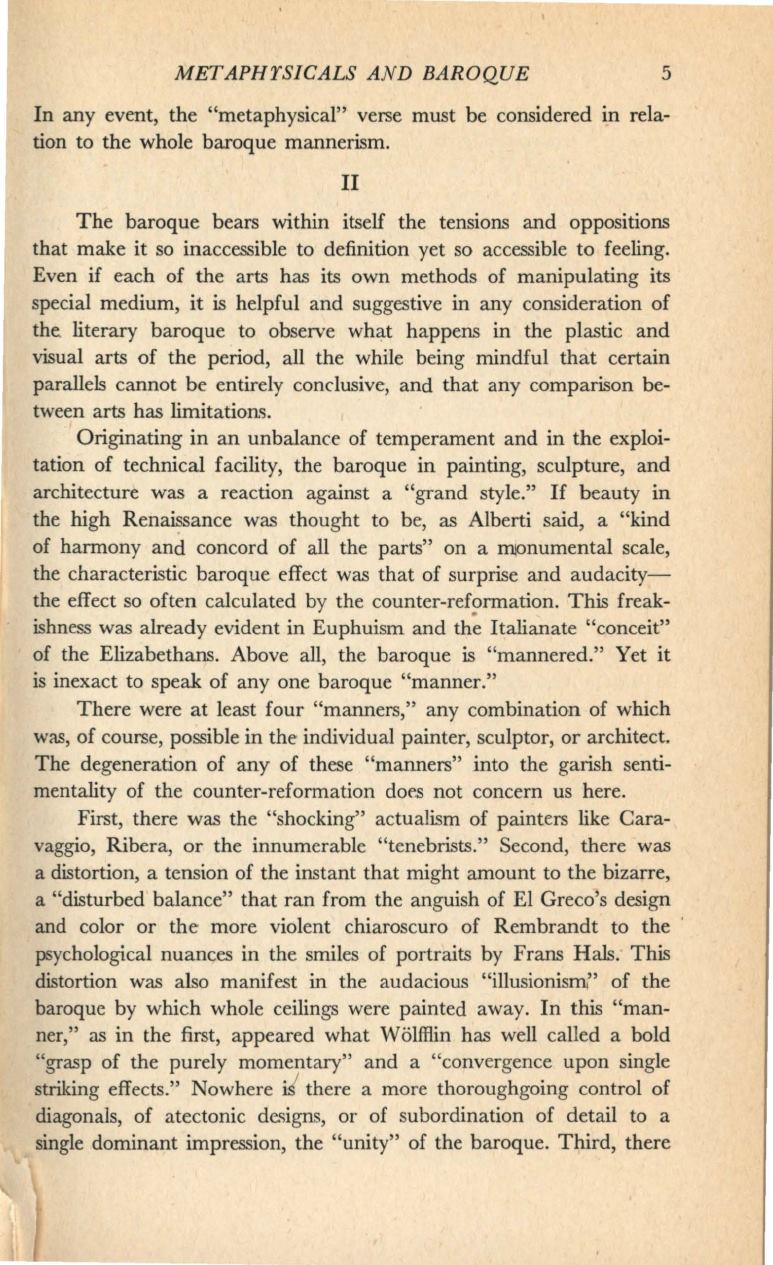
METAPHTSICALS AND BAROQUE
5
In any event, the "metaphysical" verse must be considered in rela–
tion to the whole baroque mannerism.
II
The baroque bears within itself the tensions and oppos1t10ns
that make it so inaccessible to definition yet so accessible to feeling.
Even if each of the arts has its own methods of manipulating its
special medium, it
is
helpful and suggestive in any consideration of
the. literary baroque to observe what happens in the plastic and
visual arts of the period, all the while being mindful that certain
parallels cannot be entirely conclusive, and that any comparison be–
tween arts has
limitation~.
Originating in an unbalance of temperament and in the exploi–
tation of technical facility, the baroque in painting, sculpture, and
architecture was a reaction against a "grand style."
If
beauty in
the high Renaissance was thought to be, as Alberti said, a "kind
of harmony and concord of all the parts" on a rnpnumental scale,
the characteristic baroque effect was that of surprise and audacity–
the effect so often calculated by the counter-reformation. This freak–
ishness was already evident in Euphuism and
th~
Italianate ''conceit"
of the Elizabethans. Above
all,
the baroque is "mannered." Yet it
is inexact to speak of any one baroque "manner."
There were at least four "manners," any combination of which
was, of course, possible in the individual painter, sculptor, or architect.
The degeneration of any of these "manners" into the garish senti–
mentality of the counter-reformation dot>s not concern us here.
First, there was the "shocking" actualism of painters like Cara–
vaggio, Ribera, or the innumerable "tenebrists." Second, there was
a distortion, a tension of the instant that might amount to the bizarre,
a "disturbed balance" that ran from the anguish of El Greco's design
and color or the more violent chiaroscuro of Rembrandt to the
psychological nuances in the smiles of portraits by Frans Hals. This
distortion was also manifest in the audacious "illusionism" of the
baroque by which whole ceilings were painted away. In this "man–
ner," as in the first, appeared what Wolfftin has well called a bold
"grasp of the purely momentary" and a "convergence upon single
striking effects." Nowhere if there a more thoroughgoing control of
diagonals, of atectonic designs, or of subordination of detail to a
single dominant impression, the "unity" of the baroque. Third, there


